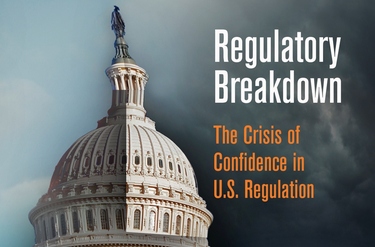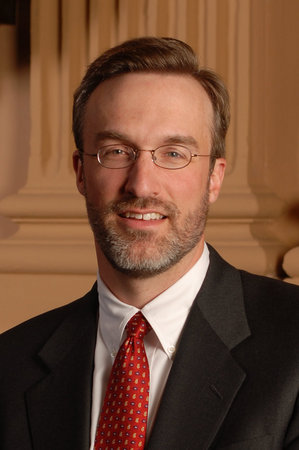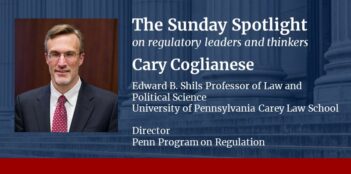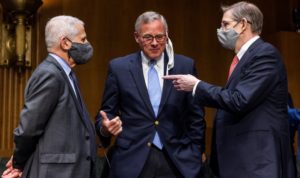
A new book both challenges and informs the debate over government regulation.
Has the United States suffered a regulatory breakdown? The answer to this question would appear to be an obvious “yes.” Times have been especially tough during the past several years, and virtually every account of the nation’s woes places considerable blame on regulation. But in truth, the regulatory system is far less clearly to blame than most of us think.
According to a Gallup poll released last week, over three-quarters of Americans think the country has either too much or too little regulation. One might well say that criticism of regulation has become one of the rare commonalities between Democrats and Republicans as of late—it’s only their respective reasons for their dissatisfaction that differ profoundly.
For those on the left, the United States never would have suffered calamities such as the financial crisis or the Gulf Coast oil spill had regulatory standards been more stringent or had regulators kept from falling asleep at the switch. For those on the political right, the country never would have suffered such deep and sustained economic problems had burdensome regulations— in particular, uncertainty over new regulations—not stifled the business risk-taking needed to jumpstart economic growth.
Whichever account is correct, it is clear that debates over regulatory policy now readily devolve into highly charged ideological disputes. In such a heated political climate, academic research on regulation is needed more than ever. If policymakers hope to fix what ails the U.S. system of regulation, they need to do more than just act on hunches or respond to hasty conclusions. They need to understand problems as fully as possible and discover the causes that underlie those problems.
Regulatory failures, after all, can arise for a variety of reasons, with triggering factors occurring at one or more stages of the regulatory process. Failures may occur because problematic activities or behaviors have remained unregulated when they should have been regulated. Or it may be that certain valuable activities are regulated too stringently. The problem may also be less with “too much” or “too little” regulation but with the wrong kind of rules.
The process of creating regulations may break down too, such as by becoming bogged down with procedural delay or with interest group corruption as many have asserted. Another possibility is that, even if both rules and rulemaking processes are appropriate, the monitoring and enforcement of those rules may be insufficient—or, alternatively, much too overbearing.
Clearly, what we need is empirical research and careful analysis to disentangle the possible causes of regulatory failure, help identify appropriate policy responses, and assess whether reforms actually work. The chapters assembled in Regulatory Breakdown: The Crisis of Confidence in U.S. Regulation provide some of this much-needed scholarly perspective on recent controversies over regulation in the United States. Written by some of the nation’s foremost experts in law, economics, political science, and public policy, the chapters in this new book dig beneath the surface-level diagnoses that have tended to dominate policy deliberations. They address issues that cut across fields as varied as banking, oil drilling, and food and drug safety, among others.
Collectively the book’s chapters show why, in the aftermath of an economic or public health crisis, policy makers need to exercise caution before jumping to any conclusions about whether or how to change regulatory policy. Regulation manages risks; it almost never purports to eliminate risk altogether, making it difficult to conclude with certainty that a disaster resulted because of a fundamental failure of regulation. Regulation is rarely a cure-all. Maybe it is rarely the true villain, as much as we might think otherwise.
Still, it remains that making regulation work better stands as one of the most significant challenges of our time. The current crisis over the U.S. regulatory system draws into stark relief the stakes involved and the important demands that society places upon regulation. Perhaps in some cases society’s demands are unrealistic, such as when the public expects regulation to be able to accommodate both unfettered economic risk taking and at the same time to provide absolute safety from harm. But certainly it is not unrealistic to ask that regulation today work better than it did yesterday and to hope that regulation tomorrow will respond to new problems more effectively than it does to those of today.
Achieving even realistic improvements in regulatory problems presents major challenges and requires vast information and deep understanding. Regulation is a human institution, built on ideas and implemented within complex webs of institutions and individuals. To regulate well, policymakers must come to grips with the varied and complex technological, economic, and social realms within which regulation struggles to make a difference. Yet our knowledge about how regulation operates remains woefully undersupplied relative both to the stakes and to other fields of study.
More academic research, like that assembled within Regulatory Breakdown, is greatly needed. Without careful analysis and empirical inquiry policymakers have nothing other than instincts and ideologies to inform their judgments. Of course, we cannot expect to replace instinct and ideology entirely. Certainly no single academic study—nor even a single book with work by excellent scholars—can be expected to bridge the political divide in the United States. But greater research can help, especially when—as occurs more often than we might admit—what appear to be ideological disputes are actually disputes over empirical claims rather than genuine moral differences.
When a car stalls on the freeway, the driver and passengers can get out and debate all they want about what broke and how to fix it. Yet the only way to find out with any certainty what went wrong is for knowledgeable people to look under the hood and get their hands dirty. The same is true when we think regulation has broken down.
This post adapts portions of Coglianese’s Preface from his new edited volume, Regulatory Breakdown: The Crisis of Confidence in U.S. Regulation (2012).




